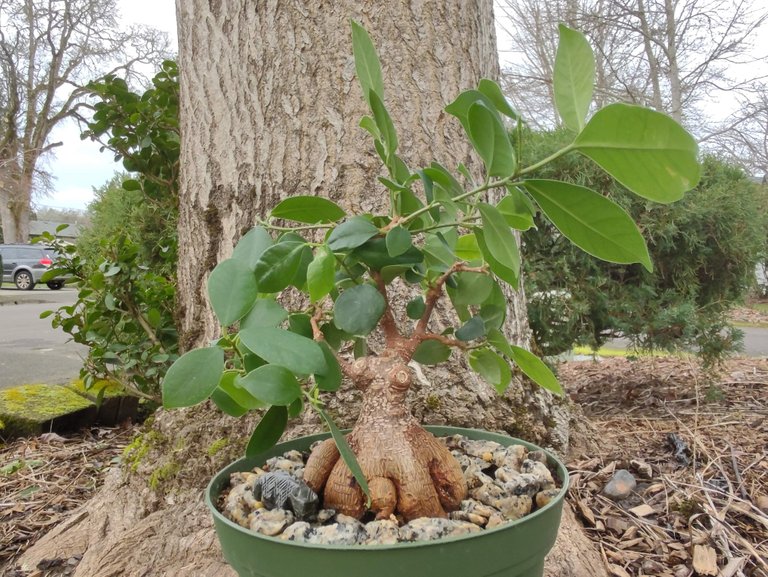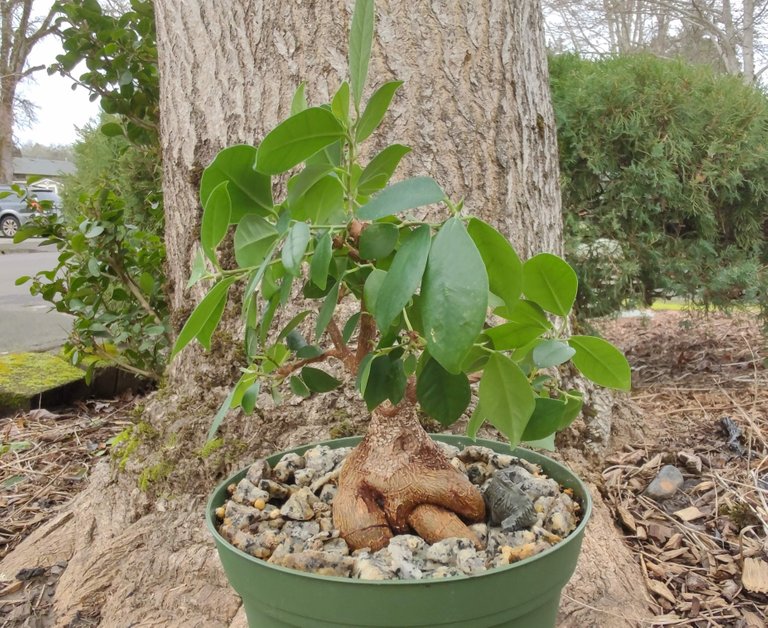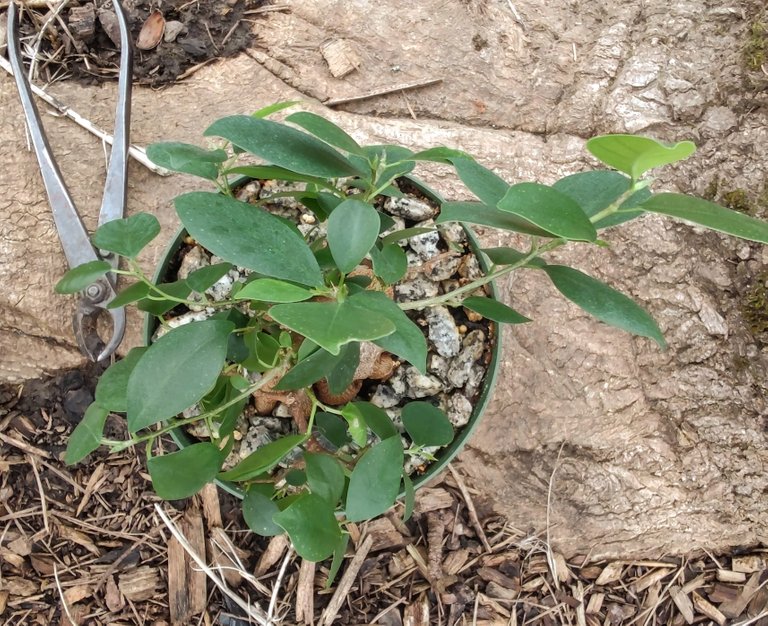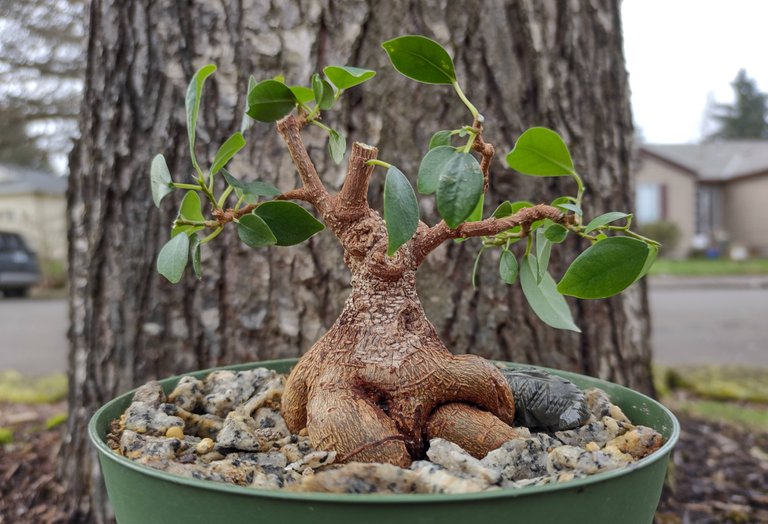Welcome Friends... long-time/no-see!
I am back from a long hiatus with a project update to share. Today, let's enjoy the progress on this little tree I have kept hidden indoors.

Historical Information
ID: 0027
Nickname: Daikon
Type: Ficus Ginseng
Age: 5 to 7 years. Unknown.
Grown: nursery stock, gift
Last repotting: March 13, 2021
Wired: March 2021

This year I chose to encourage the tree to grow according to its natural tendency, allowing the strong, central leader to grow out to its full potential. The leading branch was head-pruned once, which caused multiple splitting branches to form around the cut.
All of this focused energy going into the apical central leader caused a "bonsai effect" to enhance the proportions and appearance of the tree. The two lowest branches stayed small with slow growth, while the large central-glaring chop mark (made years before I owned this tree) has started to heal over, thanks to the energy swelling up along the central branch leader.

Now that this upper branch is full of abundant energy, I have decided to shorten it to match my initial design goals. By pruning it at its current state of thickness, I hope it will heal over the wound cleaner and faster than if I were to delay this decision.
Pruned Tree
Jan 16, 2020

The central branch pruned all the way down to the very first leaf will drastically redistribute the internal programming of this tree. First the wound will desicate, and attempt to block off entry of infections (ficus trees have a latex sap adaptation that instantly fills and dries over any fresh wound). Next growth energy will redistribute into leaf nodes, in an attempt to form multiple shoots. Eventually the strongest shoot will receive the most vigorous growth, leaving the remaining branches slow-growing, and proportionally smaller.

Additional detail cuts were also made to secondary branch tips. Mostly, they were shortened back slightly to keep the profile of the tree in check with the size of the indoor potted space I have available for the tree to grow in (this tree grows on a windowsill, and with wide branches pressed against the window, there is danger of the pot tipping over).
If the side secondary branches fork out into additional branch divisions, I will welcome this into the permanent (no feature is really permanent when it comes to living trees) design.

In this top view, it displays the unsightly nursery cut made at the graft. The way I have trained this tree has caused the living tissue to fold halfway over to conceal the flat cut-mark.
So what do you think? Will a new shoot emerge from the newly cut branch, as I hope it will? Perhaps the side branches will compete for dominance. There is always a chance the tree can suffer a loss of health or death if I errored in my actions.
Let's hope for the best, and keep our eyes open, and I'll keep a camera ready to capture the future results.
Photos in this post are all #originalworks by @creativetruth, unless stated otherwise.
Find me on discord and chat with other tree growers, bonsai enthusiasts, and gardeners.


Look at that trunk! I like its taper. This is a beautiful bonsai tree you have. Welcome back from your break, too! I have been working on transitioning some of my pre bonsai trees but I'm always nervous about pruning roots. Luckily I'm working with some species that are very forgiving. I like to learn from watching more experienced people, like yourself. Looking forward to future updates!
Yes this tree has an enormous tapered root. This year I adjusted the soil line to showcase the root flair best. They were a bit too far above the soil line for my liking. That is how the nursery plants them to make them look exotic.
My indoor trees, I am learning, do best when I avoid traditional porous bonsai soil mixes. They really prefer a spongey absorbant soil to survive indoor dry air.
Looking back, I have a backlog of photos of various trees I worked on including the root pruning on this tree, which I will be able to share here.
I have noticed the same about indoor trees as well. I was worried I was using too dense a substrate, but it's working. I am jealous of the nice moss you other bonsai practitioners often get in your pots though.
Oh my gosh. I get so much moss. It grows everywhere and anywhere on wet surfaces.
This tree is 7 years old? Can't think. Really amazing tree
I had to estimate. It already had the amazing root flair when it was purchased. Do you think it is much older? I do not know what methods nursery growers use to quickly fatten up ficus trees so they can sell quickly.
Congratulations @creativetruth! You have completed the following achievement on the Hive blockchain and have been rewarded with new badge(s):
Your next target is to reach 5500 replies.
You can view your badges on your board and compare yourself to others in the Ranking
If you no longer want to receive notifications, reply to this comment with the word
STOPTo support your work, I also upvoted your post!
Check out the last post from @hivebuzz:
Support the HiveBuzz project. Vote for our proposal!